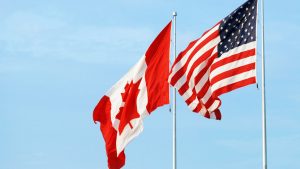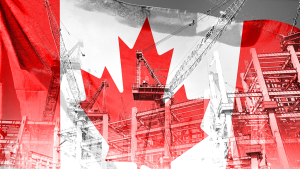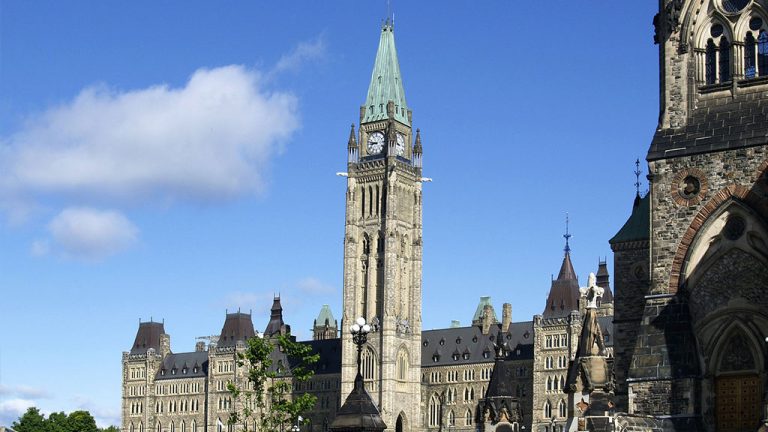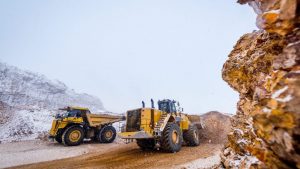Not surprisingly, due to the new stiff penalties being imposed on most Canadian goods shipped to the United States, Canadian exports have recently experienced a historically large drop in dollar volume. Traditionally, approximately three-quarters of Canada’s foreign sales have been to U.S. customers.
There has been a longstanding mutually beneficial trading relationship between the two nations. One of the partners (i.e., the U.S.), however, has now opted for a different, more restrictive framework, leaving the other (i.e., Canada) to consider what it might do to alleviate lost business and maybe even pluck some tangential benefits from altering its internal and external trading arrangements.
Canada’s dual Strategy: Free trade and infrastructure investment
In quick fashion, accord has been struck among all of Canada’s governmental leaders ‒ the Prime Minister federally and the Premiers at the provincial and territorial levels ‒ that two simultaneous courses of action warrant the most attention and effort.
First among these is to expand on the Canadian Free Trade Agreement of 2017, with the intent of counterbalancing declines in U.S. trade by eliminating interprovincial barriers to trade. In other words, there’s value in trying to make up the shortfall by tearing down regulatory, certification, packaging, and many other restrictions on the flow of products, services, and labor within Canada.
Several provincial legislatures have already ratified or are on tap to assure a more dynamic east-west streaming of economic activity. Among these are Nova Scotia’s Bill 36 (The Free Trade and Mobility Within Canada Act), Quebec’s Bill 112 (An Act to facilitate the trade of goods and the mobility of labour from the other provinces and the territories of Canada), and British Columbia’s Bill 7 (the Economic Stabilization (Tariff Response) Act). They are all about ensuring that any good, service, or worker acceptable in one province is considered likewise in another.
Second, there has been a recognition of the need to prioritize and speed up what have come to be termed ‘nation-building’ . From the laying down of the Canadian Pacific Railway ties and tracks to the West Coast, and most heartrendingly captured in Gordon Lightfoot’s Railroad Song Trilogy, to the excavation of the St. Lawrence Seaway, Canada has a gold-plated record on this score.
On several occasions in the past, infrastructure spending initiatives specifically designed to stimulate GDP growth have been launched. These initiatives always placed an emphasis on that could be launched with the shortest lead times.
The ‘nation-building projects’ approach is an evolutionary step. It will promote resource development, plus cargo shipping investments, to reach new trading partners as alternatives to the U.S., while staying true to clean environment goals and offering more stake-holding ownership opportunities to Indigenous communities.
Canada’s Bill C-5 and Ontario’s Bill 5: Economic streamlining initiatives
The Mark Carney Liberal government aims to pass Bill C-5, the One Canadian Economy Act, by July 1. It includes:
- Free Trade and Labour Mobility Act: Eliminates interprovincial trade barriers.
- Building Canada Act: Supports nation-building projects prioritized by provinces, territories, and Indigenous groups. A single federal contact and one authorizing Minister will oversee approvals. Top projects must enhance Canada’s autonomy, resilience, and security.
Complementing this, Ontario passed Bill 5: Protecting Ontario by Unleashing Our Economy Act 2025, enabling:
- Designation of economic development zones
- A ‘single window’ approval process to reduce red tape
- Overriding of existing environmental and heritage protections when necessary
However, Indigenous advocates have raised concerns over limited consultation mechanisms.
What are some of the nation-building projects that are almost sure to be put forward for approval?
- The possibility of marshalling existing hydropower capacity and upping wattage through offshore wind turbines has the Atlantic region considering exporting needed, CO2-free electricity (e.g., for AI data centers) to the rest of Canada.
- By providing faster and/or likely cheaper access to the Atlantic Ocean, the expansion of the Port of Churchill on James Bay would obviously benefit and resource producers in the West.
- There is much speculation about whether an all-Canadian-terrain oil pipeline from Alberta to the East Coast can find adequate support and financial backing. The recently completed TransMountain Pipeline expansion in Alberta-B.C. is garnering attention for opening Asian markets for Alberta crude and, as a side benefit (i.e., through reducing available supply north-south), raising the price for Western Canada Select barrels at U.S. refineries.
- There’s a good argument for building a shipping port on the Arctic fringe of Nunavut, with an all-season roadway possibly extending as far as Yellowknife. Such preparatory and foundational work is essential for more fulsome northern resource development.
- A $16.5 billion Pathways Alliance carbon capture and is presently on the drawing boards but stalled with respect to an assured road forward. This project proposes moving carbon emissions from the giant extraction plants in the Oil Sands to burial sites in Cold Lake, 400 kilometers away. It promises to lower emissions in 2030 by one-third relative to their 2019 level.
- Ontario Premier Doug Ford’s fondest wish is to open up the thrillingly named Ring of Fire region in northern Ontario. This location, northeast of the city of Thunder Bay and in the hard-to-traverse swampy lowlands of Hudson Bay/James Bay, is believed to contain vast deposits of the that are essential to operating today’s high-tech devices ‒ nickel, copper, chromite, cobalt, platinum, plus others.
More nation-building projects in the pipeline
This is only a short compilation. There are many other possibilities for a nation-building project list, including nuclear reactors (e.g., Ontario Hydro has committed to and is proceeding with a at its Darlington location); hubs tied to the wealth of green power generation availability in Canada; and an already under-study electricity transmission corridor running across largely inaccessible, for now, regions of mid- to northern B.C.











Recent Comments
comments for this post are closed